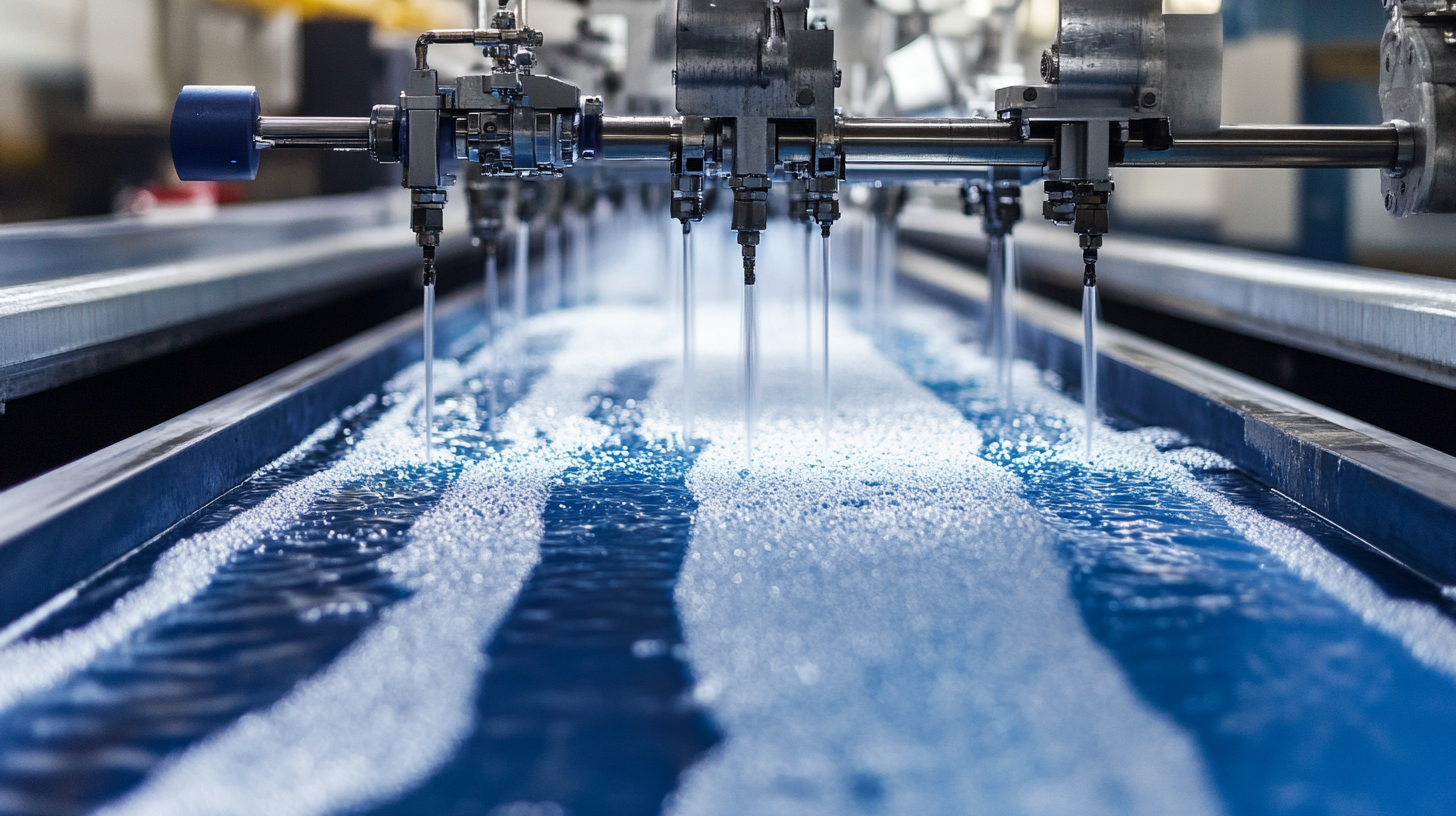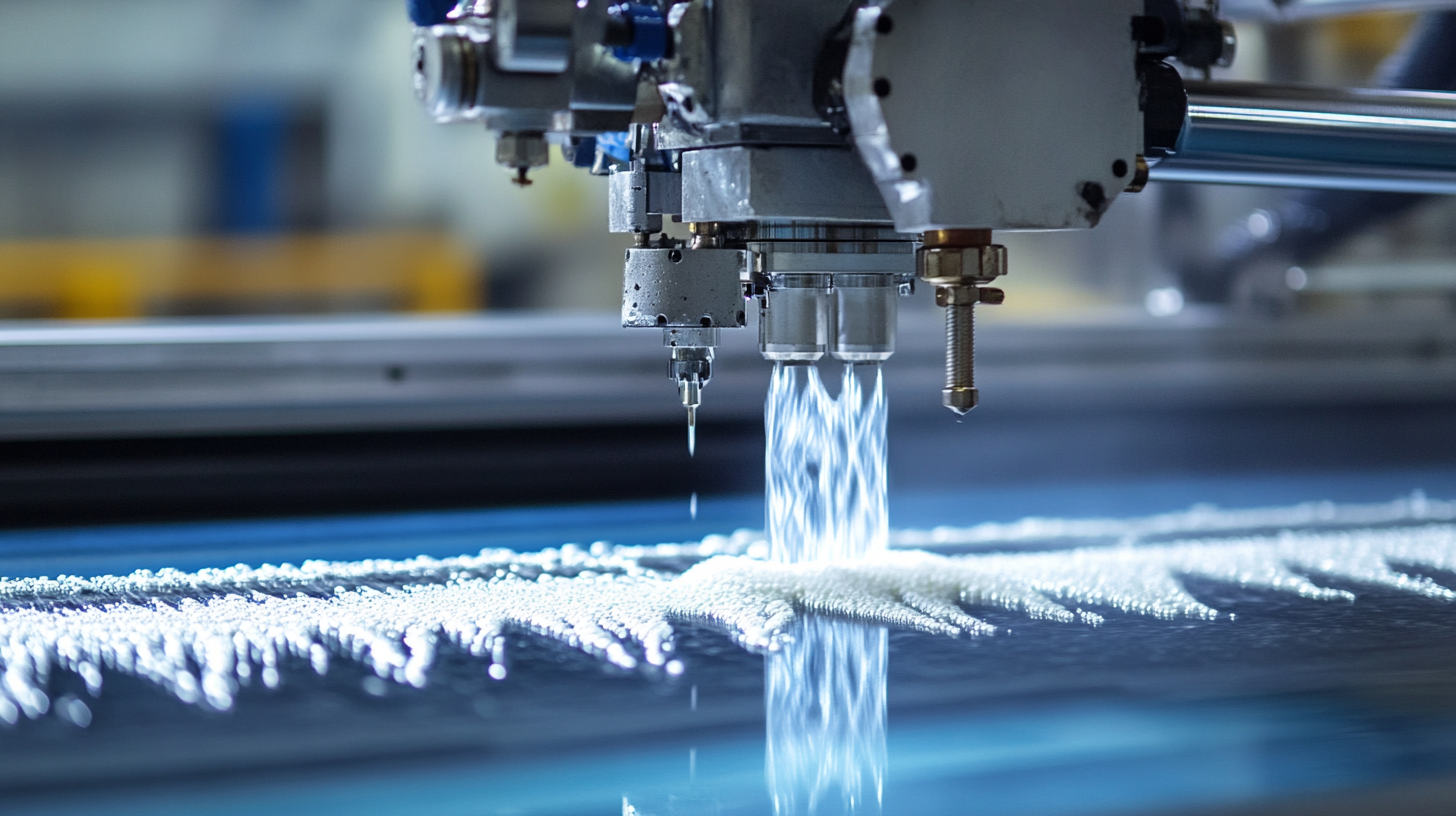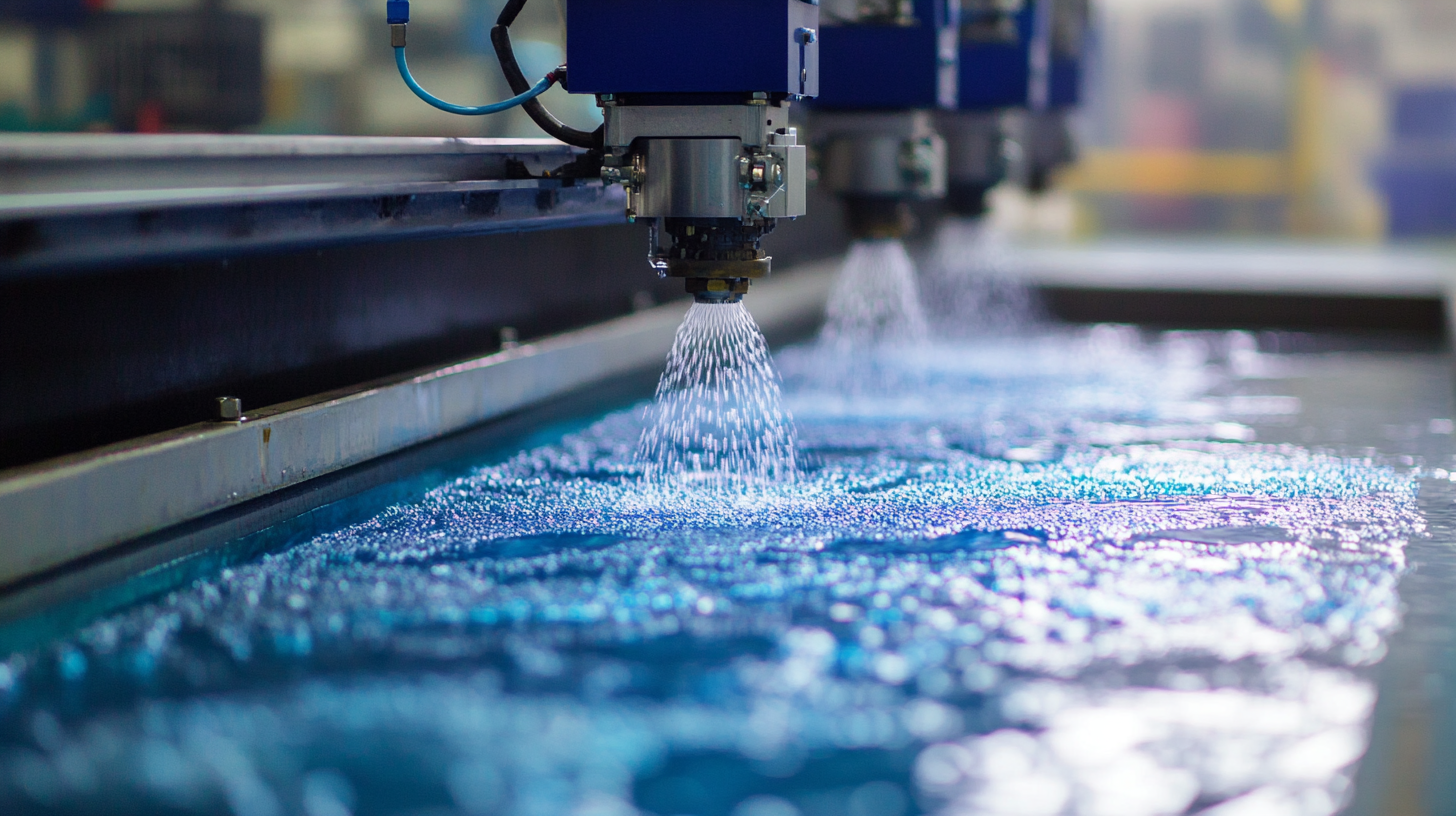Leave Your Message
In the rapidly evolving textile industry, the need for precision and efficiency in production processes has led to a growing interest in the adoption of advanced machinery, particularly the Water Jet Machine Textile. According to a recent market analysis by TechNavio, the global waterjet cutting machine market is projected to grow at a CAGR of 6.25% over the next five years, underscoring the increasing importance of this technology across various sectors, including textiles.

A water jet machine not only offers versatility in cutting various materials without fraying or damaging the fabric, but it also maximizes productivity while minimizing waste. As manufacturers seek innovative solutions to meet rising consumer demands and environmental standards, understanding the alternatives available and implementing strategic sourcing practices for water jet machines will be crucial for success in this competitive landscape.
When selecting a water jet machine for textile production, it’s essential to focus on key features that directly impact performance and efficiency. One of the most critical aspects is the machine’s cutting speed. A higher cutting speed not only enhances productivity but also allows for more intricate designs without sacrificing quality. Additionally, look for machines with adjustable pressure settings, as this flexibility enables operators to tailor the cutting process for different fabrics, ensuring optimal results for each material type.
Another important consideration is the size and capabilities of the water jet machine. Ensure the machine can accommodate the maximum dimensions of the fabrics you plan to work with. A larger cutting bed can handle more substantial projects and reduce the need for multiple setups. Furthermore, the machine's software compatibility is vital; advanced software systems can streamline operations by allowing for precise cutting paths and improved design integration. By investing in a machine that excels in these areas, textile manufacturers can enhance their production processes and maintain a competitive edge in the industry.
Water jet cutting has emerged as a transformative technology in textile manufacturing, offering a plethora of advantages that enhance production efficiency and precision. One of the most significant benefits is its ability to cut a wide variety of fabrics without fraying or damaging the material. This is especially vital for delicate textiles where precision is crucial. The cold cutting process of water jets also eliminates thermal distortion, ensuring the integrity of the fabric is maintained throughout the cutting process.
When considering the best water jet machine for your textile production, keep in mind that not all machines are created equal. **Tip 1:** Look for machines with adjustable pressure capabilities, as this allows for tailored cutting suitable for different fabric types. **Tip 2:** Ensure the machine has a user-friendly interface, making it easier for operators to switch between tasks and materials efficiently. This usability can drastically reduce training times and increase productivity.
Moreover, water jet cutting systems are known for their versatility. They can seamlessly cut intricate designs and patterns that would typically be challenging to achieve with traditional cutting methods. **Tip 3:** Invest in a machine that includes advanced software for design and automation; this can simplify the workflow and enhance design possibilities, ultimately leading to higher creativity in textile production.
When it comes to textile production, choosing the right water jet machine is crucial, not only for efficiency and quality but also for cost-effectiveness. Water jet machines have become increasingly popular in the textile industry due to their ability to cut various fabrics swiftly and precisely without causing fraying or damage. This non-contact cutting method minimizes waste and reduces the need for post-processing, translating to significant savings over time.
Investing in a water jet machine can initially seem daunting, but the long-term financial benefits far outweigh the upfront costs. By optimizing fabric utilization and reducing cutting time, businesses can achieve quicker turnaround times, ultimately leading to increased productivity and profitability. Furthermore, many modern water jet machines are designed to be energy-efficient, which can lower operational costs and contribute to a more sustainable manufacturing process. As companies explore the most cost-effective solutions, prioritizing high-quality water jet machines will not only enhance their production capabilities but also ensure they stay competitive in a constantly evolving market.
Water jet technology has emerged as a game-changer in textile production, primarily due to its sustainability and environmental advantages. Unlike traditional cutting methods that rely on harmful chemicals and generate significant waste, water jet cutting utilizes high-pressure water streams to achieve precision and efficiency. This process not only drastically reduces the use of toxic materials but also minimizes energy consumption, making it a more eco-friendly option for manufacturers committed to reducing their carbon footprint.

In addition to its environmental benefits, water jet technology also promotes resource conservation. The absence of heat during the cutting process eliminates the risk of damaging the fabric, allowing for better yield and less material wastage. Furthermore, water jet machines can easily cut through multiple layers of textiles at once, increasing productivity without compromising quality. By investing in this innovative technology, textile producers can not only enhance their operational efficiency but also align themselves with the growing demand for sustainable practices in the industry. This commitment can lead to improved brand reputation and customer loyalty as consumers increasingly prioritize environmentally responsible products.
Integrating water jet machines into your textile production line is a game-changer that can significantly enhance efficiency and precision. Water jet technology utilizes high-pressure water streams to cut through a variety of fabrics and materials without fraying or damaging the edges. This non-contact process not only reduces material waste but also allows for intricate designs that are often impossible with traditional cutting methods. By investing in advanced water jet machines, textile manufacturers can improve workflow, reduce downtime, and ultimately increase their production capacity.
Moreover, the seamless integration of water jet machines into the existing production line can streamline operations. Implementing automation and CAD designs enables real-time adjustments and optimizations, which can minimize manual intervention and speed up the cutting process. Training staff to operate these machines efficiently ensures that the full potential of this technology is utilized. The ability to quickly switch between different fabric types and patterns further enhances adaptability, making it easier for manufacturers to respond to market demands and trends. Embracing this technology can lead to a sustainable competitive edge in the fast-paced textile industry.

